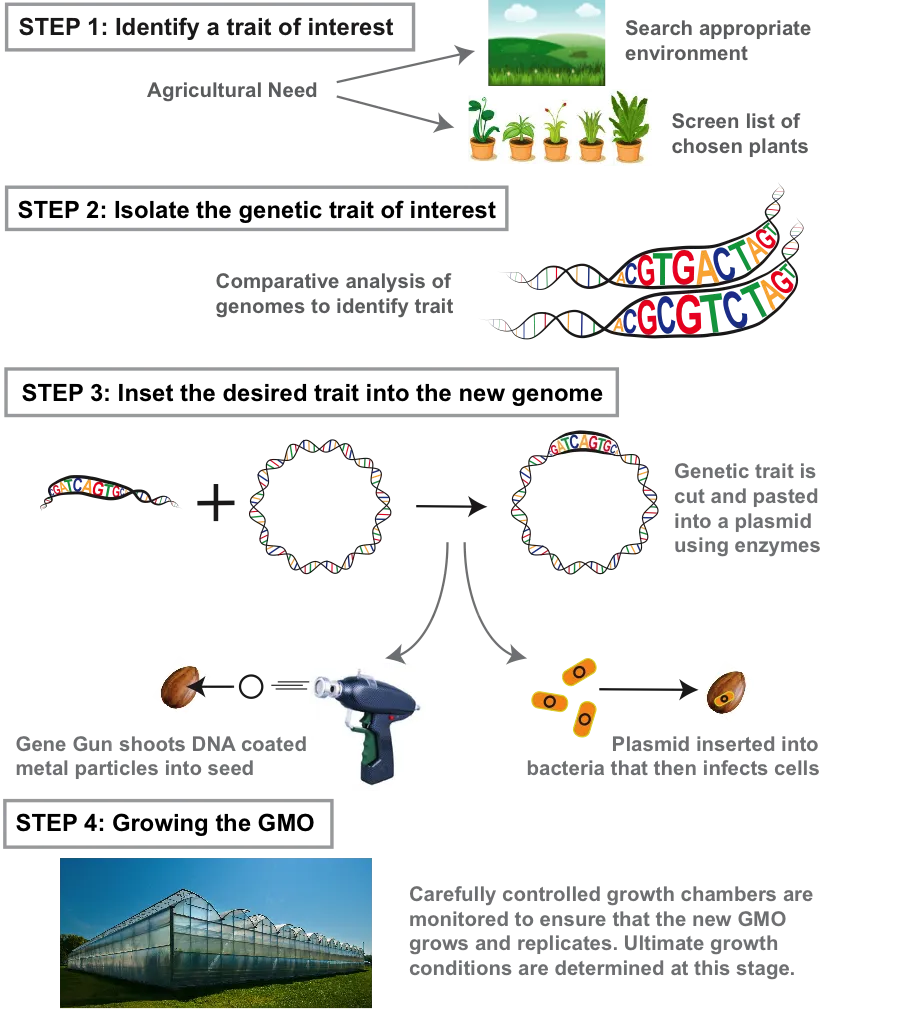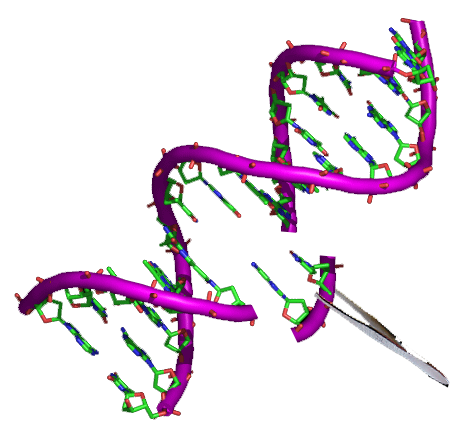News Highlights
The Department of Biotechnology (DBT) has issued guidelines easing norms for research into genetically modified crops and circumventing challenges of using foreign genes to change crops profile.
‘Guidelines for Safety Assessment of Genome Edited Plants, 2022’
- The ‘Guidelines for Safety Assessment of Genome Edited Plants, 2022’ exempt researchers who use gene editing technology to modify the genome of the plant from seeking approvals from the Genetic Engineering Appraisal Committee (GEAC), an expert body of the Environment Minister.
Genetically Modified Crops
- Genetically modified crops (GM crops) are agricultural plants whose DNA has been altered using genetic engineering techniques.
- Physical approaches or the employment of Agrobacterium for the delivery of sequences contained in T-DNA binary vectors can be used to engineer plant genomes.

Advantages of Genetically Modified Crops
- Crops
- Crop yields have increased.
- Food or medication production costs are reduced.
- Pesticides are used less frequently.
- Composition of nutrients improved
- Pest, disease, and herbicide resistance
- Allowing plants to thrive in environments where they would otherwise struggle
- Increased shelf life means there’s less risk of items spoiling soon.
- Stress tolerance has improved.
- A shorter maturation period
- New products and ways for growing
- Animals
- Better meat, egg, and milk yields
- Reduce disease susceptibility in animals
- Environment
- Bio-herbicides and bio-insecticides that are environmentally friendly
- Soil, water, and energy conservation
- Forestry product bioprocessing
- Society
- Ensure food security
Disadvantages of Genetically Modified Crops
- Health Issues:
- Allergens (any substance that can trigger an allergy) and antibiotic resistance markers could have a negative impact on human health.
- GM crops have been linked to birth abnormalities, malignancies, renal harm, diabetes, autism, and Alzheimer’s disease in studies.
- Concerns About the Environment:
- They may reduce the diversity of species. Insect-resistant plants, for example, may injure insects that are not their intended target, resulting in the extinction of that insect species.
- GM technology may potentially result in the transfer of genes from one crop to another, resulting in the creation of “superweeds” that are resistant to popular pesticides.
- Viral genes introduced to crops for viral resistance could be passed on to other viral pathogens, resulting in new and more aggressive virus strains.
- Economic Fears:
- The process of bringing a GM crop to market is time-consuming and expensive.
- It does not deliver the promised high yields. For example, the highest mustard yields come from the five countries that do not grow GM mustard – the United Kingdom, France, Poland, Germany, and the Czech Republic — not from the GM-growing United States or Canada.
- Furthermore, the patent gives GM crop researchers a hazardous amount of power over the food supply, raising concerns about a few businesses dominating global food production.
- Ethical Issues:
- By mixing species, GM crops violate the intrinsic values of natural organisms.
- Plants containing animal DNA have also faced hostility.
GM Crops Regulation in India
- Rules, 1989
- The Rules, 1989, are a set of rules that govern the manufacture, use, import, export, and storage of hazardous microorganisms/ genetic
- Includes both research and large-scale applications of genetically modified crops.
- Authorities Formed
- Recombinant DNA Advisory Committee (RDAC) under the Department of Biotechnology, Ministry of Science and Technology
- Institutional Biosafety Committees (IBSC) under the Department of Biotechnology, Ministry of Science and Technology
- Review Committee on Genetic Manipulation (RCGM) under the Department of Biotechnology
- Genetic Engineering Approval Committee (GEAC) under the Environment Ministry for regulating the manufacturing, use, import, export and storage of hazardous micro-organisms or genetically engineered organisms (GMOs) and cells in the country.
- State Biotechnology Coordination Committee (SBCC)
- District Level Committee (DLC)
- Supreme Court Guidelines
- The gap between GM-planted and conventional fields should be extended from 20 metres to at least 200 metres.
- A designated scientist should ensure that all of the conditions were met during the field trials of GM crops.
Who Approve Genetically Modified Crops?
- Genetically Modified Crops are approved by Genetic Engineering Approval Committee (GEAC)
- Bt cotton is the only one GM crop approved by GEAC for commercial cultivation in India
- BT Cotton –
- Bt cotton was created jointly by the Maharashtra Hybrid Seeds Business (Mahyco) and the US seed company Monsanto to combat the bollworm invasion that had decimated cotton fields in the past.
- Bt Cotton was licensed for commercial production in six states: Andhra Pradesh, Gujarat, Karnataka, Madhya Pradesh, Maharashtra, and Tamil Nadu.
- BT Cotton –
| About Genetic Engineering Appraisal Committee (GEAC)Ministry – Ministry of Environment, Forest and Climate Change (MoEFand CC). It is in charge of environmental assessment of activities involving large-scale usage of hazardous microbes and recombinants in research and industrial production. The committee is also in charge of evaluating applications for the release of genetically modified (GE) organisms and goods into the environment, including field testing. GEAC is co-headed by a representative from the Department of Biotechnology and is chaired by the Special Secretary/Additional Secretary of Ministry of Environment, Forest and Climate Change |
Way Forward
- Genetically modified crops are good upto a scale but it needs to be properly regulated and studied before commercialization. M.S. Swaminathan committee report of 2003 needs to be considered and National Biotechnology Regulatory Authority to be established.
Pic Courtesy : Harvard University
Content Source : The Hindu



